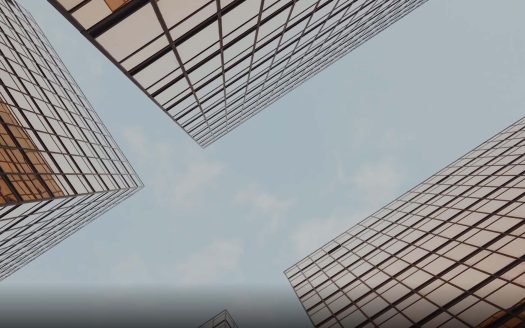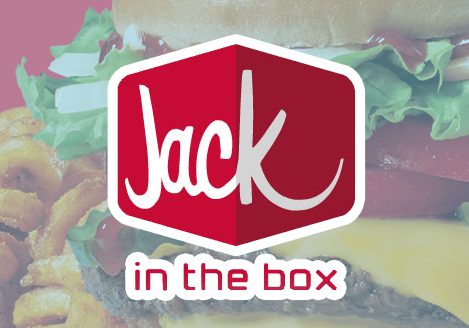Mountain West: 2022 commercial real estate roundtable
Mountain West Commercial was a part of this roundtable and featured in the article.
This month, Utah Business partnered with Holland & Hart to host a roundtable event featuring Utah’s commercial real estate industry leaders. Moderated by Lana Howell, executive managing director of Colliers, they discussed commercial real estate in Utah, inflationary pressures, record growth, and more. Here are a few highlights from the event.
How do you see inflation affecting Utah’s market?
Bryce Blanchard | Executive Managing Director, Capital Markets | Newmark
The negative effects of inflation and hyper-inflation are devastating. I’m a big believer that the federal government has got to continue to act and act quickly. Our interest rates are back up to almost four percent, which we haven’t seen since 2007. What’s going to happen for investment real estate—which is my playground—is cap rates have to go up. And if it does, we’ll have a healthy market that finds equilibrium. And if it doesn’t, it’s going to be a rocky road with free pricing. We are in a new price-per-square-foot paradigm for every asset class…and we just have to get used to that new norm until we find equilibrium.
Lee Dial | CFO | Cowboy Partners
We’ve had a lot of new developers come into this market over the last decade. In my opinion, you could go into development, make a lot of mistakes, and still be saved and come out OK because cap rates compressed, interest rates came down, and that made up for a lot of financial mistakes. My worry for the real estate market is that those who maybe aren’t as savvy and haven’t gone into it conservatively—perhaps they’re going to get bitten through that. Continuing with higher interest rates and higher construction costs, I think it’s going to be harder for deals to pencil. We’re already seeing players in the market who are looking to buy products starting to pull back because everybody’s a little bit uncertain.
Natalie Manning | CEO | ABG Builders
Our biggest problem with inflation in construction is locking down prices for materials. We’re trying to buy steel for a project in Las Vegas and they’ve said, “You have to give us the money in one or two days, or the price goes up.” And that’s how it’s been for a lot of materials. If we don’t lock in those prices—not just lock in but have the money to that company—they’ll turn around and sell the materials to somebody else. I think lumber went up 300 percent last year. Though it did fall a little bit, the question is, will the price of materials ever go back to where it was? I don’t think so.
Braden Moore | National Development Director | Big-D Construction
We get that question all the time: When are steel and lumber prices going to go down? If you look at the history of our country, we’ve seen this so many times. If you put more money into our economy, inflation is going to go up. We put $30-40 trillion into our economy, and it is affecting us everywhere. In construction, we had a double whammy where we had inflation plus Covid, and labor was not available. We haven’t had any projects that have said, “No, we’re going to cancel this altogether.” We’ve had some that paused but did not cancel altogether. And until you start seeing some of that, the demand is still there, and the prices are still going to increase.
How are workforce shortages affecting all sectors of business? Do you have a solution?
Monica Rafferty | Commercial Real Estate Agent | InterNet Properties, Inc.
We have a huge untapped resource in Utah, and that is women. There are two key reasons for the lack of participation by women: daycare and the wage gap. Adding full-day kindergarten and after-school care would allow women who are forced to stay home to enter the workplace one year sooner than they currently can. We wouldn’t need additional infrastructure because we’re not bringing new people to the states to solve this issue—these women already live here. There’s a huge economic argument for the state to get involved in finding a way to make it easier for women who want to work to be able to work.
Wes Christensen | Hotel Brokerage | Mountain West Commercial Real Estate
I represent the hospitality space, which represents a pretty good portion of Utah’s workforce in our industry. I think the hotel industry needs to shift to an à la carte pricing model like what you see with airlines. If you want your room cleaned every night, you’re going to have to pay for it, or if you want breakfast, you’re going to have to pay for it. What that does is give the consumer what they want at a price point that they want, but it also allows the franchisee to have a lower operating cost model where they don’t have to employ as many people. The people that they do employ can receive higher wages and cover a broader depth of services.
Trevor Ellis | Acquisitions and Development Manager | PEG Companies
A couple of weeks ago I took my family to a newly opened ice cream shop here in Salt Lake, where the owner was working behind the counter. Two weeks later, I drove past that same location. [They had a sign that said], “$200.00 for an application.” I almost dropped my resume off—that’s an easy $200.00! To me, that shows where we are in this employment shortage. Sometimes it’s an opportunity for people who are looking for work—you have to look at it that way. As we look to the future, we have a dynamic economy here in Utah with record opportunities for people to get involved, get skilled, and increase opportunities in the future.
Are people going to start shopping in person and going to restaurants again?
Bryce Blanchard | Executive Managing Director, Capital Markets | Newmark
It’s already happening. But when I think about shopping, I think of two different categories: chore shopping and experience shopping. For chore shopping, I think the long-term trend is getting toilet paper and toothpaste delivered to your door. But experience shopping is part of the human condition—people want to go experience that activity. I think you’ll see an acceleration in experience shopping because people have pent-up demand.
Kate Carlisle-Kesling | Attorney | Holland & Hart
I think you have to make it a destination point, right? I keep reading about millennials and how they want “an experience.” Like going to the mall—if it’s an experience that I can share with my family, it’s got to be a full-service destination place, not a quick trip to buy a shirt.
Trevor Ellis | Acquisitions and Development Manager | PEG Companies
My wife regularly brags that she hasn’t been to a grocery store in over four years. We experience e-commerce all the time. But on the flip side, when we do go out, we like to find those fine dining places—we’re looking for those experiences. Experiential retail is what’s going to thrive coming out of this. We’re looking for opportunities to get out, experience people, and interact with people. I think those businesses that understand that are going to do well coming out of this.
Jeff Barton | Senior Portfolio Manager | KeyBank Real Estate Capital
Throughout the pandemic, we saw our retail portfolio perform in a really strong way. There were a lot of questions throughout the pandemic—certain tenants took deferrals that would defer their rent for the next year and pay it back this year, and we’ve seen that they have. From a lender’s perspective, performance is everything, and we’ve seen retail perform. We’re going to continue to lend on retail because there continues to be enough demand to support it.
Eli Mills | EVP | CBRE
A couple of years before Covid, for the first time in US history, there were more restaurant sales than grocery store sales. That shift had occurred before the pandemic, and it continues. I think restaurants will make it. There will be winners, and there will be big winners. They will figure it out, and they will do well—from fine dining to quick-serve—because that trend was already starting, and that trend has continued.
What changes do you think will occur in the future office sector, as some companies still work from home?
Paul Skene | Managing Principal | Cresa Salt Lake City
I, personally, don’t think remote work is going away at all, but it’s an interesting dynamic in this market because the unemployment rate is so low. Some companies are not finding it as easy to bring their employees back. It is going to affect office space—it has affected it. I think after another couple of years, as tenant’s leases expire, we’ll start to see more of an acceptance or less of an acceptance. Is there a component to working and socializing and creating a culture within your company that’s going to be hurt by not coming back to work? I think it’s too early for a lot of companies to make that judgment yet.
Brandon Fugal | Chairman | Colliers International
In a market with record low unemployment, the way companies will be able to recruit—to a large degree—will be through leveraging their workspace as a unique environment where people can thrive. Workspaces that are fully amenitized will prevail over those workspaces and office spaces that lack amenities. There will be a flight to quality like never before.
Jake Boyer | CEO | The Boyer Company
We’re seeing all these tech companies that announced early on—like Facebook—that they’re never going to come back to the office. And what did they do? They recently bought REI’s headquarters and are renovating it to come back to the office. Google, Amazon—they’re all coming back.
How have increased housing prices affected our local businesses?
Ryan Davis | Partner, Affordable Housing | J. Fisher Companies
There’s a triple threat right now with affordable housing—we have high land basis here, rising construction costs, and rising interest rates. And for the first time as a state, we have been oversubscribed in private activity bonds, which is the governing decision on whether or not you get low-income housing tax credits. This is common in other states, but it has never been an issue in Utah.
Providing housing for employees is almost becoming a competitive edge, which you sometimes see in resort towns like Alta. As a state, housing is a major economic development initiative that we need to stay hyper-focused on. There’s a lot of need for the affordable space, but also the middle-income space. I don’t think that gets enough attention in our market. The pricing we’re seeing in Salt Lake County for rent and for purchase is very difficult for our area median income, and that gap is growing quicker than our supply can catch up.
Eli Mills | EVP | CBRE
We put out a report twice a year, and we always compare our market to other markets as far as our rent-to-income ratio. We’ve often been very low—and we are lower than other areas right now at about 32 percent. Phoenix is at 35 percent, San Francisco is at 43 percent, and Los Angeles is at 50 percent. So we’re still very good compared to other markets, but you’re going to have to see incomes going up in order to continue this.
Jake Boyer | CEO | The Boyer Company
I think the shock factor has come from us recently graduating into a “big city” in a way. We saw 30 percent home value increases in 2021. It’s like we’ve been discovered, and everything’s more expensive. And as a result, we’re going to have to pay higher wages so that people can pay higher rent, but at the moment, we’re still par—we’re at a place where it’s comfortable. You can still come here, live, and be comfortable when you compare it to other western cities.
What do you see happening in the next few years relative to industrial demand?
George Arnold | Partner | Hamilton Partners
I think it’s going to continue. The restricting factor will be the availability of land for that product. People are coming here, but the question will be, how much land do we have left? Everyone is going to have to go a little further out from the Davis County and Utah County areas to accommodate.
Robert Booth | VP, Development | Wadsworth Development Group
As the population expands, we think there’s a tremendous opportunity with a long runway in industry. Even as you expand north and south, there’s a lot of runway in terms of need. If you look at the population growth down south and up north, you’re going to need corresponding space, so we’re super bullish there.
Brandon Fugal | Chairman | Colliers International
I think Utah has graduated from being the crossroads of the west to being the crossroads of the world. That is best illustrated by the non-existent vacancy that we’re seeing in Utah County, for example. We’re seeing literally 1 percent vacancy in the industrial sector of Utah County and the strongest conditions on record for the entire Salt Lake area market, and even northward. This market is even seeing industrial buildings selling at a higher price per square foot than office buildings, which is an interesting and unexpected dynamic.
Jeff Barton | Senior Portfolio Manager | KeyBank Real Estate Capital
There was an article about five days ago in the Wall Street Journal that made a comment that resonated with me. It said that our supply chains were created to be cost-effective but not necessarily resilient. I think the lessons that we’ve learned over the past two years is that when you operate on a just-in-time basis, that can create major problems in the supply chain. People are definitely rethinking how globalized and “in-time” they want to be. That dynamic is driving an ongoing demand for local industrial space.
In four words or less, describe trends to look for in the next year’s business climate.
Bryce Blanchard | Executive Managing Director, Capital Markets | Newmark
Price exploration to equilibrium.
Monica Rafferty | Commercial Real Estate Agent | InterNet Properties, Inc.
Hire women, and build housing.
George Arnold | Partner | Hamilton Partners
Salt Lake has arrived.





